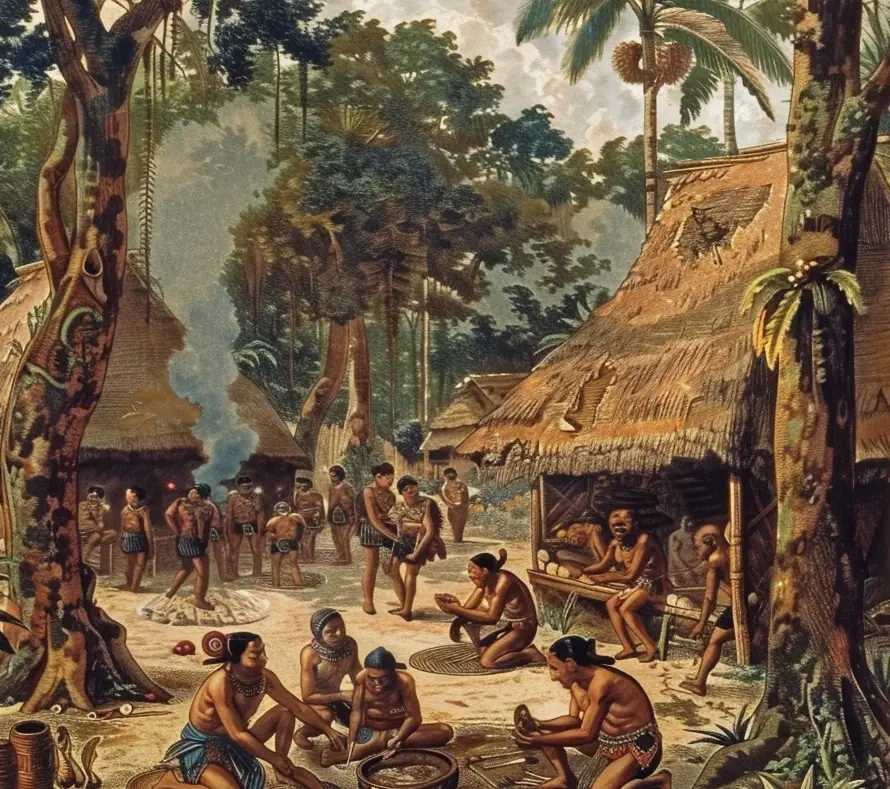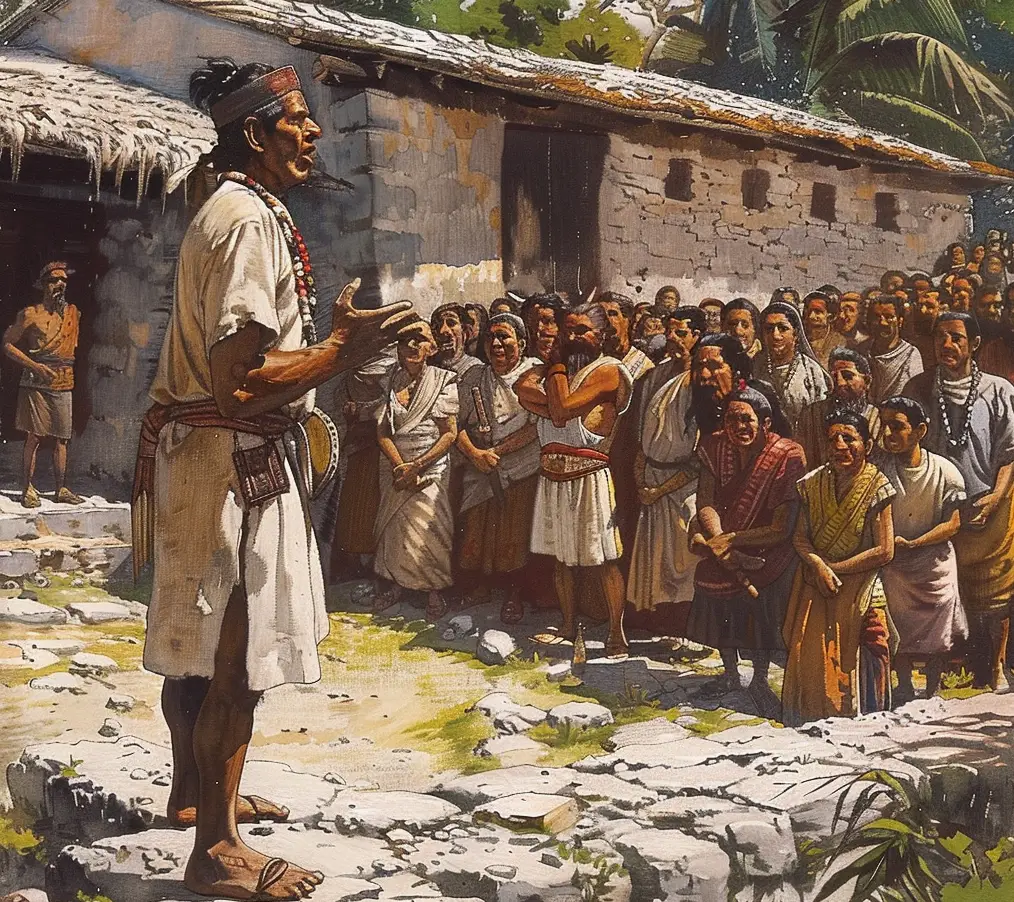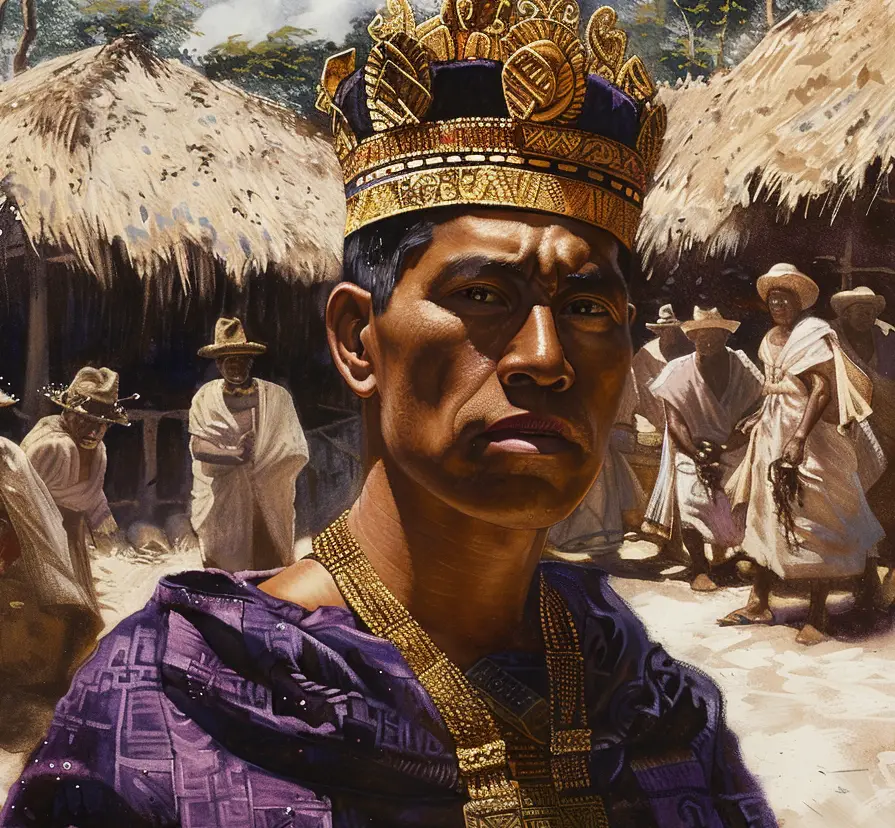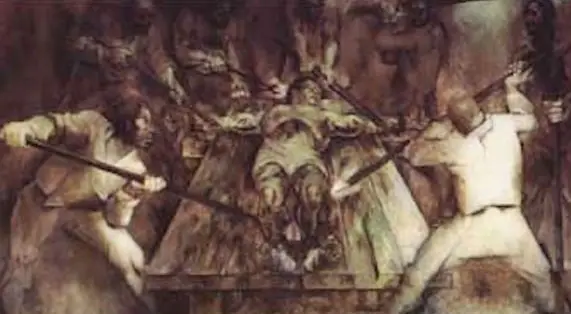Podcast: Play in new window | Download
Subscribe: Apple Podcasts | RSS
 Mexico’s Caste War, erupting in 1847, epitomized the deep-seated grievances of indigenous communities, notably the Maya, against oppression and socioeconomic inequalities. Fueled by years of exploitation, land expropriation, and cultural repression, indigenous discontent reached a boiling point, ignited by a violent clash between a local Maya rebel and a local hacienda owner. The rebellion, eventually became a full-scale uprising as indigenous communities across the Yucatán Peninsula rose against their oppressors, aiming to overthrow the current socio-political structure and reclaim autonomy. Despite initial successes, including the capture of key towns, the insurgency faced staunch opposition from Mexican federal forces and foreign military interventions. The conflict, marked by guerrilla warfare and mass reprisals, persisted for decades, leaving a profound impact on Mexico’s social, political, and cultural fabric. During this war, Maya rebels invoked the name of Jacinto Canek in their war cries and in their speeches to rally the populace behind their cause. Mexican authorities and military commanders who were not from the Yucatán and had no knowledge of local history, had no idea who this Canek person was and why his very name could motivate the local indigenous people to fight.
Mexico’s Caste War, erupting in 1847, epitomized the deep-seated grievances of indigenous communities, notably the Maya, against oppression and socioeconomic inequalities. Fueled by years of exploitation, land expropriation, and cultural repression, indigenous discontent reached a boiling point, ignited by a violent clash between a local Maya rebel and a local hacienda owner. The rebellion, eventually became a full-scale uprising as indigenous communities across the Yucatán Peninsula rose against their oppressors, aiming to overthrow the current socio-political structure and reclaim autonomy. Despite initial successes, including the capture of key towns, the insurgency faced staunch opposition from Mexican federal forces and foreign military interventions. The conflict, marked by guerrilla warfare and mass reprisals, persisted for decades, leaving a profound impact on Mexico’s social, political, and cultural fabric. During this war, Maya rebels invoked the name of Jacinto Canek in their war cries and in their speeches to rally the populace behind their cause. Mexican authorities and military commanders who were not from the Yucatán and had no knowledge of local history, had no idea who this Canek person was and why his very name could motivate the local indigenous people to fight.
Jacinto Canek was not a man who was even alive during the Caste War. He was born in the city of Campeche probably in the year 1731. This was a few decades after the Yucatán Peninsula – and the Maya people – came under complete Spanish political control. This was following the conquest of the Itza Kingdom which resisted the Spanish until the end of the 1690s. Originally named Jacinto Uc and sometimes cited in the history books as José Cecilio de los Santos, Canek adopted the surname “Canek” later in life. The reason for this was possibly to establish a connection with past kings of the Itzas who bore that name. As a child, Jacinto received education in Latin and history at the Franciscan monastery Convento Grande in Mérida but was expelled due to his rebellious nature and other problems he had with authority. Following his expulsion, Canek worked as a baker for several years. Scholars speculate that his upbringing, education, and subsequent dismissal and rejection by the Franciscans fueled Canek’s resentment towards Spanish colonial rule and the Roman Catholic Church, while strengthening his identification with the Maya community.
Since the arrival of the Europeans on the Yucatán Peninsula in the early 1500s, the Maya people had experienced significant loss of lands which were traditionally owned collectively. Their lands were seized and granted by the Spanish crown as haciendas to the Catholic Church or Spanish nobility. This appropriation disrupted the Maya’s means of livelihood. Additionally, the Spanish imposed forced labor upon the Maya population in the form of the encomienda system, reducing them to a state of virtual slavery. Furthermore, the Spanish systematically eradicated traces of Maya culture, including temples and writings, further eroding their cultural identity. The Itza kingdom, the last bastion of independent Maya sovereignty, succumbed to Spanish conquest in Guatemala in 1697.
 Canek arrived in Cisteil, a village situated approximately 60 miles southeast of Mérida, around November 3 or 4, 1761. By November 8, a conflict arose between Canek and a visiting parish priest named Miguel Ruela, who was present in Cisteil to conduct a mass. Canek made threats against Father Ruela’s life, prompting him to report the incident to the church and governmental authorities. The following day, during the priest’s mass, Canek intentionally caused a false alarm of fire, seemingly in an attempt to clear the church premises to carry out his threat against the priest. However, no harm befell Father Ruela and later the incident was dismissed as a prank and was written off as a mild form of terrorism.
Canek arrived in Cisteil, a village situated approximately 60 miles southeast of Mérida, around November 3 or 4, 1761. By November 8, a conflict arose between Canek and a visiting parish priest named Miguel Ruela, who was present in Cisteil to conduct a mass. Canek made threats against Father Ruela’s life, prompting him to report the incident to the church and governmental authorities. The following day, during the priest’s mass, Canek intentionally caused a false alarm of fire, seemingly in an attempt to clear the church premises to carry out his threat against the priest. However, no harm befell Father Ruela and later the incident was dismissed as a prank and was written off as a mild form of terrorism.
By November 12, 1761, Canek had gained widespread acceptance as a leader among the majority of Cisteil’s population. According to subsequent statements made by locals who opposed Canek and later collaborated with the Spanish authorities, the people of the town demonstrated their allegiance by venerating Canek, kissing his hands and feet as a gesture of obedience. To the Spanish government, the Maya people in the area were treating Canek as if he were their king or a saintly or mystical figure. This had undertones of sedition and blasphemy and was a slap in the face to both the Catholic Church and the Spanish king.
On November 19 or 20, 1761, following a religious ceremony at the church, Canek addressed the gathered assembly in the local Maya language, expressing discontent with the oppressive Spanish rule. He urged his followers to break free from the burdensome yoke of Spanish subjugation, citing the hardships inflicted upon them by tribute demands and physical abuse.
On November 19, Diego Pacheco, a Spanish alcohol merchant unaware of the changed circumstances in Cisteil, arrived to collect debts that locals had owed to him for previous purchases of goods. Upon learning of Pacheco’s presence, Canek convened the village’s leaders, armed with rifles and spears, and confronted Pacheco at the tavern where he lodged. Following a brief exchange, Pacheco was killed.
 On the same day, Canek was ceremoniously crowned king by his supporters. They raided the local church, seized religious artifacts – including statues of the Virgin of Guadalupe – and presented them to Canek, who was then crowned with the Virgin’s crown and adorned with a mantle and scepter. Canek claimed to possess magical powers and received the support of five local respected elder medicine men, aiming to solidify his authority and attract more followers. This coronation ritual effectively bestowed upon Canek both royal and supernatural legitimacy, bolstering his leadership and expanding his following. People had nicknamed him “Chichán Montezuma”, and some claimed that he embodied the spirit of the Maya feathered serpent god of old, Kukulkán. The name “Jacinto Canek” then began to spread beyond just the local area.
On the same day, Canek was ceremoniously crowned king by his supporters. They raided the local church, seized religious artifacts – including statues of the Virgin of Guadalupe – and presented them to Canek, who was then crowned with the Virgin’s crown and adorned with a mantle and scepter. Canek claimed to possess magical powers and received the support of five local respected elder medicine men, aiming to solidify his authority and attract more followers. This coronation ritual effectively bestowed upon Canek both royal and supernatural legitimacy, bolstering his leadership and expanding his following. People had nicknamed him “Chichán Montezuma”, and some claimed that he embodied the spirit of the Maya feathered serpent god of old, Kukulkán. The name “Jacinto Canek” then began to spread beyond just the local area.
On November 20, 1761, Captain Tiburcio Cosgaya arrived in Cisteil with the intention of quelling the rebellion and ending the illegitimate reign of this local king. The indigenous people were anticipating his arrival and prepared themselves accordingly. In the ensuing conflict, the Spanish captain, along with five of his soldiers and eight indigenous individuals, lost their lives. Canek, the leader of the rebellion, reassured his followers by proclaiming that the ultimate victory of the Maya was foretold in the Chilam Balam manuscripts written generations before.
The governor of Yucatán responded by dispatching messages to mobilize militias and ordering the disarmament of indigenous populations across the province. A substantial military contingent, led by two captains named Puerto and Calderón, was deployed to encircle the village and prevent reinforcements from reaching Canek and his supporters. Meanwhile, the rebels fortified their defenses and endeavored to incite neighboring villages to join the uprising.
On November 26, 1761, a Spanish force of 500 soldiers confronted Canek and his followers in the central plaza of Cisteil, where approximately 1,500 Maya were positioned in two fortified lines. Some of these Maya came from over 50 miles away to participate in the fight. Despite their numerical advantage, the Maya succumbed to the superior firepower of the Spanish forces in close combat. The village was burned to the ground, and around 500 indigenous individuals perished in the ensuing inferno, trapped in their homes with no escape. The dead included eight Maya rebel leaders, and the medicine men previously mentioned. The final death toll amounted to over 600 Maya dead to 40 Spanish casualties.
Canek managed to evade Spanish capture with a small group of supporters, fleeing to a hacienda called Hoontoolchac. There, he rallied approximately 300 men who had also escaped from Cisteil. However, Canek and roughly 125 of his followers were subsequently apprehended by a Spanish military contingent at the small village of Sibac. Canek was sentenced to death, to undergo torture, bodily mutilation, and ultimately, execution by burning with his ashes scattered to the wind.
 The aftermath of the rebellion saw the execution of Canek by the methods promised and eight of his accomplices hanged in the main plaza of Mérida on December 14, 1761. This happened barely a month after the uprising began. Additionally, 200 other participants received sentences to include 200 lashes and the cutting off of the right ear. The governor ordered that the fields and wells of Cisteil be salted so that the town would be uninhabitable, and that the remaining population would be forced to disperse. The Viceroy of New Spain and the Spanish king himself criticized the governor for the severity of his response. In the Yucatán itself, however, wealthy landowners and Spanish merchants alike cheered on the actions of the governor.
The aftermath of the rebellion saw the execution of Canek by the methods promised and eight of his accomplices hanged in the main plaza of Mérida on December 14, 1761. This happened barely a month after the uprising began. Additionally, 200 other participants received sentences to include 200 lashes and the cutting off of the right ear. The governor ordered that the fields and wells of Cisteil be salted so that the town would be uninhabitable, and that the remaining population would be forced to disperse. The Viceroy of New Spain and the Spanish king himself criticized the governor for the severity of his response. In the Yucatán itself, however, wealthy landowners and Spanish merchants alike cheered on the actions of the governor.
Yucatán’s colonial Governor José Crespo y Honorato attributed the rebellion primarily to the Spanish policy of permitting indigenous people to possess firearms for hunting. This leniency was deemed necessary due to the impoverished agricultural conditions in Maya lands, exacerbated by Spanish land confiscations. The failure to fully convert the Maya to Roman Catholicism and the lingering tolerance towards Maya cultural practices were also cited as contributing factors. Governor Crespo believed that preserving Maya cultural celebrations posed a threat to future peace, as they upheld the memory of ancient Maya religious rites. He also asserted that the rebellion against “God and king” had been premeditated for over a year. The governor was seen as a hero among the non-Maya of the region who had lived in fear of the constant threat of uprisings. Almost a year to the day of the executions of the Maya rebels, the Spanish-born governor succumbed to his environment and died of yellow fever after a prolonged and agonizing battle with the illness.
REFERENCES
Abreu Gomez, Emilio. Canek: Historia y leyenda de un héroe Maya. Self-published, 2013. (In Spanish) We are Amazon affiliates. Buy the book on Amazon here: https://amzn.to/3vAYz3T
